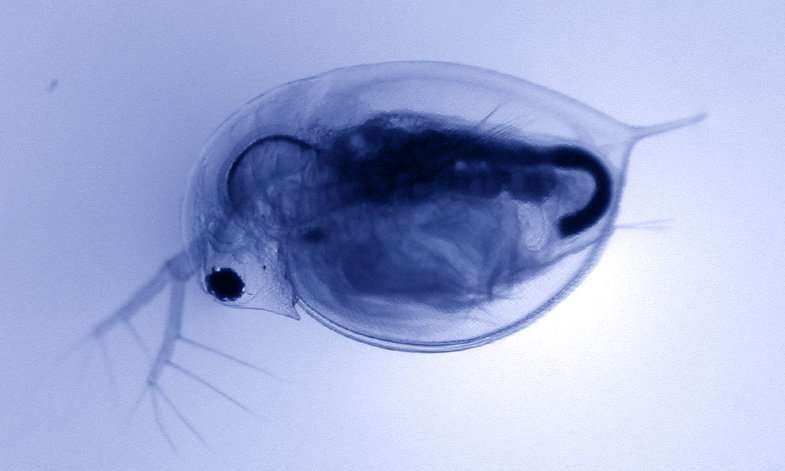Water flea. Credit: University of Sheffield
Scientists at the University of Sheffield have discovered that living creatures' responsiveness to changes in the environment can evolve and depends on the conditions they experienced in their past.
The study, published in Nature Ecology and Evolution, is the first to show that the ability of a living creature to change its characteristics in response to changes in its environment, can itself evolve. Such flexibility in how organisms develop has fascinated scientists for generations.
This flexibility has emerged as a crucial factor in the study of how animals and plants respond to natural and man-made changes to their environment, which include predators, disease and changes in temperature.
The University of Sheffield study, led by Dr Andrew Beckerman from Sheffield's Department of Animal and Plant Sciences, in collaboration with researchers from across Europe, investigated changes to the characteristics of water fleas.
Water fleas are an iconic example of how the flexibility of a living creature's ability to develop in response to changes in their environment can evolve. They can grow helmets or spikes on their necks in response to smells emitted by their predators, which signal a risk of mortality.
Water fleas can reproduce without sex, giving birth to genetically identical offspring, which allowed the researchers to look at how genetically identical individuals respond to different predators.
Furthermore, water fleas can smell their predators, and this smell triggers changes in development at very early ages that results in helmets and spikes forming on their heads, altered timing of size at which they reproduce and the number of offspring.
The international research team examined a population of water fleas exposed to a midge predator and other populations that were exposed to fish and midge predators.
Using novel methods to examine simultaneously the flexibility in multiple traits, they found repeatedly that the flexibility of populations exposed only to midge was different than populations exposed to both fish and midge. Living with two predators affected the evolution of the flexibility in a manner very different from living with one. The history of exposure to different predators changed how the water fleas were able to be flexible.
More information: Julia Reger et al. Predation drives local adaptation of phenotypic plasticity, Nature Ecology & Evolution (2017). DOI: 10.1038/s41559-017-0373-6
Journal information: Nature Ecology & Evolution
Provided by University of Sheffield























